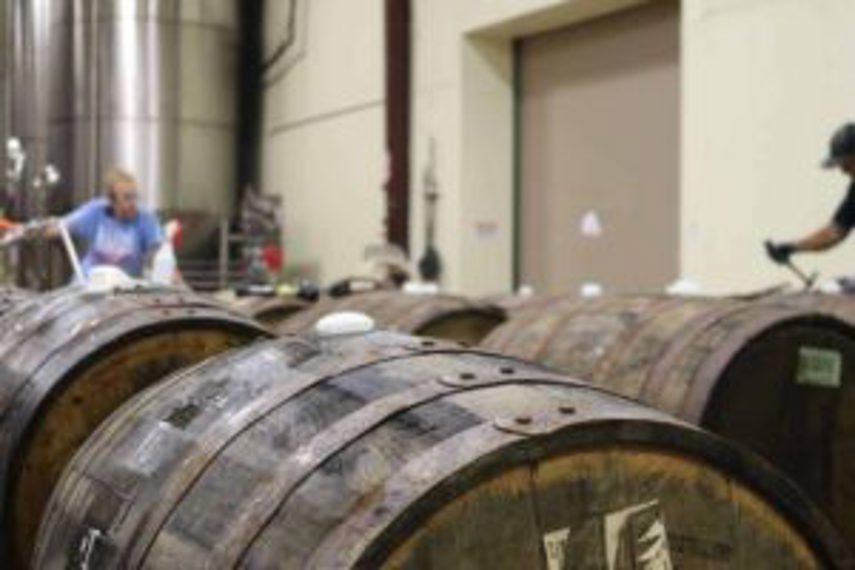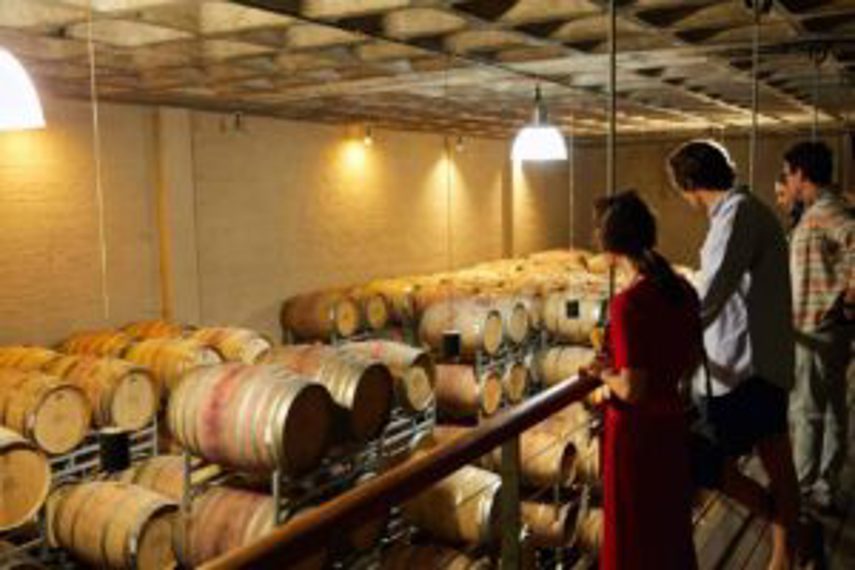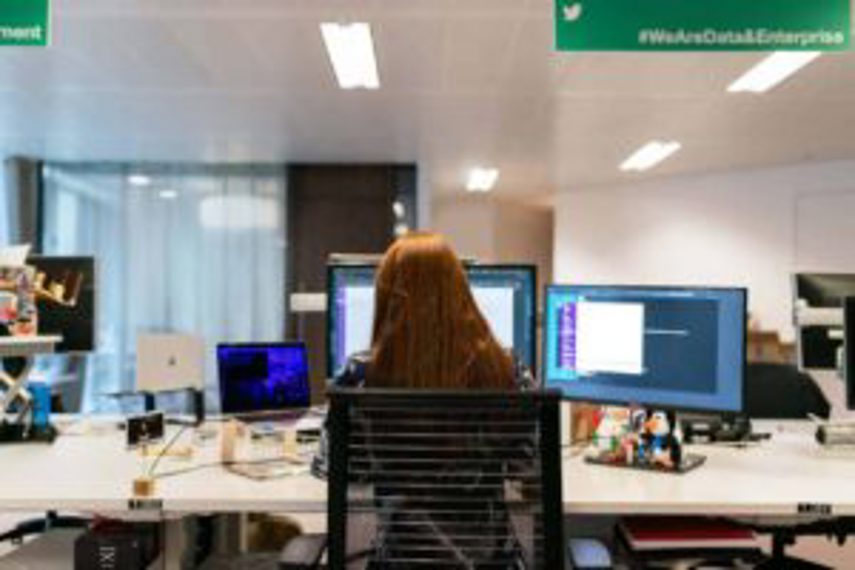
If you own a distillery, or are planning to, you’re going to be up against a lot of competition. That means you need to get your fundamentals right, and smooth out as many of your processes as possible to trim the fat from your business and really optimise.
There are now distillery software solutions out there to help with this, so you have the tools to avoid the inefficiencies and money pits that could give opportunities to your competitors to outpace you.
10 key distillery management practices and the tools to use for them
These are the top 10 distillery management practices you should hone, and the software you’ll need to do so.
1. Raw materials purchasing
As a distillery manager, you will need to purchase both the raw materials for your product (e.g. grains and botanicals), and also the extra items that go alongside these, such as barrels, kegs, bottles, labels.
Look for: Software that simplifies and automates purchasing
What do you need, how much do you need, and when do you need it? These are the three questions you must be able to answer at all times, and it’s dedicated software that will help you get there – not more spreadsheets!
Ideally, you’ll find a software platform that monitors your stock in real time and helps you automate materials reorder point notifications. That way as you run low, the system will ping you so you can stay on top of it. Even better, that same software will coordinate deliveries and link up with your financial and sales systems, to give you even greater visibility.
- Learn more about managing purchasing with inventory management
 Purchasing raw materials is a critical part of distillery management: look for a software solution that helps manage expiry dates and reordering
Purchasing raw materials is a critical part of distillery management: look for a software solution that helps manage expiry dates and reordering
2. Production management
There’s a lot going on in the distillation process, especially for those crafting boutique products that take a lot of additional time and care. This careful production process requires equally careful production oversight.
Look for: Software that can track ingredients and assemblies
The more you can improve your life with software, the more time you can focus on the human element of getting your products right – taste, smell, experience, instinct.
Take a load off your plate with software that catalogues what ingredients you have available in real time, and also helps you create digital bills of materials so that you can predetermine what should go into your products every time to create that consistency.
For production planning, consider software that has a built-in assemblies feature. That is, a feature that will calculate the quantity of raw materials required for a finished product (as determined by its bill of materials), and the number of finished products you can create based on your ingredients at hand.
- Learn more about managing distillery production with Assemblies
3. Inventory management
We’ve touched on this a couple of times already, and will again – the importance of good inventory management cannot be overstated.
The better you can track what goods you have on premises – what’s in transit (either coming or going), current quantities, desired quantities, inventory versus sales, raw ingredient expiries, and everything else touched by inventory - the smarter you’ll be able to run your business.
You need: Inventory management software
Good inventory management software usually has the features we’ve outlined above, as well as a few more.
Beyond purchase management, production assemblies and real-time inventory tracking, inventory management software helps you connect your business processes digitally from purchase through to sale. That means your inventory, sales, financial, freight, returns – all of that data comes together.
With a good inventory management system, you can start to answer questions like:
- How much does it cost you to produce each bottle?
- Are some of your products more valuable than others?
- Are you wasting time making certain products when others would be more lucrative?
Each question you investigate could be a serious opportunity to optimise your business and trim costs.
- Read more about the 10 most crucial inventory performance measures SMEs can use
 Warehousing can quickly become complex for distillers, hence the need for software to manage stock movement in real time
Warehousing can quickly become complex for distillers, hence the need for software to manage stock movement in real time
4. Warehouse management
It’s easy to lose track of what you’ve got sitting in your warehouse, and doubly so if you operate more than one warehouse, if your warehouse and your distillery aren’t in the same area, if you have a bonded warehouse, and so on. Therefore, a critical distillery management practice to perfect is good warehouse management.
You need: Software that can handle inward deliveries and other moving goods
We’ve talked a few times already about tracking real-time inventory levels across premises, so we won’t repeat that again. All we’ll say is that you’ll need good inventory management here as well as in the areas above.
An additional feature you could look for with regards to warehouse management specifically is that connection point between the physical and digital realms – that is, being able to quickly scan in goods as they arrive or depart your premises, so that your real-time system is truly real-time.
Barcode scanners are savvy investments, for example, to increase the time-efficiency of your warehousing processes. These devices also help you during stock taking, so you don’t have to tally everything by hand.
Distillery Inventory Software That Lifts Your Spirits
Get back to the products you’re passionate about with cloud-based distillery software Learn more5. Sales order management
Picking, packing, partial shipments, setting stock aside, presales, back orders – there’s a lot to order fulfilment. This is where distillery managers turn to sales order management, which creates visibility across the sales and order fulfilment pipeline so that it can be checked for inefficiencies, and monitored in case of mistakes.
You need: An order management system
A good order management system is going to create that visibility we just mentioned.
This will let you see at a glance every order in your system, understand quickly how much it was for, who it was for, and where the products are. Partial or split shipments can be tracked, and the system should even alert you if there’s a deadline for the second part of a partial shipment coming up.
The entire sales cycle must be able to pass through this system. From the first purchase order through to invoicing, picking numbers, packing details and finally shipping the finished goods, you will need to track each touchpoint.
To improve an order management system even further, pairing it with inventory and warehouse management functionality allows the sales system to check inventory levels and let customers know when stock is low (or has run out), or track backorders for you.
 Managing sales via multiple channels – especially if you are using an omnichannel strategy – requires integrated software
Managing sales via multiple channels – especially if you are using an omnichannel strategy – requires integrated software
6. Batch tracking
Batch tracking is an essential process for any food or drink manufacturer, distilleries included. Everything in this article has so far been about creating real-time visibility into different aspects of your distillery, and batch tracking is how we start to tie those systems to your actual products.
You need: A system to generate batch numbers and track them
A batch tracking system is one that allows you to group together a set of products that share similar properties – for example, bottles of spirits that were all distilled at the same time.
Chances are, if you discover a problem with one of them there may be a problem with the whole batch. But after you’ve sold all the bottles, you may lose track of where they went – unless you're using batch tracking to keep them tied together. In the unfortunate event that you do find a problem, you can quickly trace the entire batch and organise an appropriate response.
- Learn more about using Batch tracking
7. Managing sales channels
Are you using an omnichannel sales strategy? In the modern age, a lot of companies are switching to an omnichannel sales approach, which is where the business sells across multiple channels at once, and all of those channels are connected at the back end.
As a distillery, you could be selling to wholesalers or retailers via salespeople, selling on your website, selling through partners, operating a cellar door, and perhaps even selling certain products on social media. There’s a lot going on, which can be a lot to manage.
You need: An interconnected sales system with multiple touchpoints
In order to succeed in omnichannel sales without getting confused as to what’s being sold where, and who’s purchased what, you’re going to want to ensure that your sales order management system can integrate across a few different channels.
But, before you invest in a piece of sales tech, first make sure you get very clear on these details:
- Who are you selling to? To businesses, or direct to consumers – or both?
- What platforms are popular among these audiences?
- Where do you currently sell, and will you be opening up new sales channels based on the above?
- What are the key growth areas of your business, and where do people want to buy those products?
Once you know who you’re trying to reach and where they like to shop, you’ll best know which channels are right for you and therefore which software integrations you’re going to need in your sales order management system.
- Bonus point: Don’t forget returns. While we want to believe goods will only ever flow out of your business and never back into it, you’ll need to factor in returns, which can occur for a number of reasons.
Learn more about reversing your supply chain here
 Integrating software for core processes – including accounting, inventory management, and shipping – is key to refining your distillery management
Integrating software for core processes – including accounting, inventory management, and shipping – is key to refining your distillery management
8. Shipping
Unless you’re selling directly through a cellar door, you’re going to need to get good at shipping. Now, shipping can be as simple as just packing bottles in a box and sending it away with a courier, but as you grow and especially if you grow to encompass multiple locations, shipping may start to seriously consume time and money.
Basically, there’s a right way and a wrong way to do shipping. And – you guessed it – using software to create greater visibility is the right way forward.
You need: An integrated shipping function
If you’ve read the rest of this article up to this point, you’ll be beginning to see how all the functions of distillery management tie together. We’re talking about different practices, but the reality is they’re going to end up as one big system – or a series of small systems tied together.
With that in mind, here you’re ensuring that shipping and freight is integrated into the end of your sales order and/or production management system.
Look for software that lets you record typical freight charges and automatically apply them to sales orders, so you don’t have to add these manually every time. Automation will save you a lot of time - automated delivery details, shipping labels, inventory tracking, email or text updates to the customer, and so on. Those barcode scanners we mentioned before are relevant here again, helping you quickly record information about what boxes are going where.
- Learn more about advanced Shipping solutions
9. Accounting
Do yourself a favour: get rid of those old spreadsheets and look into a modern accounting platform.
Invoices, product sales, salaries, utilities and bills, rates, purchases, wastage and shrinkage – finance gets big, and gets big fast. That’s not even taking into account the business analysis side of accounting, like trying to figure out how to calculate your cost of goods sold, inventory versus sales, profit margins, carrying costs, product performance… the list goes on.
You need: Automated, simplified digital accounting
If you can tie all of your purchasing, carrying, facilities, salaries, insurance and sales costs into a single accounting dashboard, you are going to save yourself hours of work each week – and a serious headache every EOFY.
Look for software that’s designed to make your life easy. Visualisations like graphs and timelines, click-a-button-and-it-works functionality, automated reports, automated reconciling, and most importantly, software integrations. Because accounting software is only going to be of use to you in the long term if you can connect it to everything else – especially your inventory management system.
 CRM software gives you a way to manage the sales process end to end, whether your customers are businesses, end consumers, or both
CRM software gives you a way to manage the sales process end to end, whether your customers are businesses, end consumers, or both
10. Customer relationship management
The final distillery management practice we want to talk about is customer relationship management (CRM). Your customers – whether businesses or consumers – are going to find and interact with your brand in a few different ways. Their experiences could be positive or negative, quick or slow, enjoyable, or – in some cases – a real pain.
To help smooth out your sales process and draw more customers into a smooth, efficient pipeline that they will enjoy, you need to be able to manage those relationships.
You need: A CRM tool
B2B CRM tools can be used by sales, marketing and customer service. It’s another central dashboard for you to use, this time displaying your customers, their previous purchase histories with your business, the status of current orders, outstanding issues, right down to whether or not they’re on your mailing list.
You can use a CRM platform to better optimise your customer pipeline. Where do customers find you? What are the various touchpoints they have with your distillery before making a purchase? How was your service to them? Did they come back? With some platforms, you can even include social media data, giving you a glimpse into how people are talking about you online.
This is all valuable business intelligence. If you can lay out your customer experience pipeline and figure out where the problem areas are – the bottlenecks, the pain points – you can mitigate them and potentially vastly improve the effectiveness of your sales and marketing efforts.
How to choose distillery management software
Distillery software might seem niche, but there’s actually a lot of competition out there between software vendors offering services that would suit the distillery environment. That means you as a customer have the benefit of choice – so knowing what to look for will help you get something that’s right for your unique business.
Make yourself a checklist and think about each of these points:
- Cost: How much will it cost, and how will you generate ROI from the software?
- Features: What does it come with out of the box, can it be customised, and does it have the essential features that you need?
- Support: What support resources are available, and how available are the company’s support staff? Are they in your time zone?
- Customer success management: Will you receive a customer success manager of any kind? Who is going to help you set up the platform at your end? Does sales support end at the point of purchase?
- Time to implement: How long will it take to get the software up, running, and generating value at your business?
- Ease of use: Is this going to take hours, weeks or months of training? How quickly can you get your staff using the software without it being clunky or difficult?
- Cloud: Does the software sit in the cloud, or will you need on-premise hardware for it to work?
- Scalability: Is this a ‘now’ solution or a solution that will grow with your business? Are you charged per user? How easy is it to add or remove functionality?
- Software integrations: What can you plug this software into? Can it feed into your other vital systems? Does it work with an eCommerce solution?
- Mobile functionality: Are you bound to your computer to use this, or can you use it on the go on your phone?
 It’s worth taking the time to answer the questions above when researching your software options
It’s worth taking the time to answer the questions above when researching your software options
Do I need ERP software to manage a distillery?
If you start Googling a lot of these features, you’re quickly going to run into the acronym ERP, or Enterprise Resource Planning. It will look like a software suite that seems to do everything – so does that make it the golden goose you’ve been searching for?
- What is ERP? ERP software is, broadly speaking, a software package designed to help organisations manage the day-to-day running of their business in a centralised fashion. It will usually cover as many departments as possible, and may extend into other areas we haven’t discussed today like risk management or project management.
Is ERP software suitable for SMEs?
Ultimately it depends on the individual vendor, but generally speaking, ERP is usually not the best option for SMEs.
ERP is big. It’s typically designed for larger organisations with a lot of different business premises and functions. As such, it can be overkill for a smaller company, and certainly quite expensive. Companies that break even on an ERP system tend to have very complex needs and are working on a large scale.
At the SME level, you’re probably looking for a blend of a few smaller platforms – inventory management to handle purchasing, orders, stock and shipping, then CRM for customer data, and an accounting platform for the financials. Those three combined are usually more than enough – and when they’re cloud-based, they’ll scale as your business grows.
